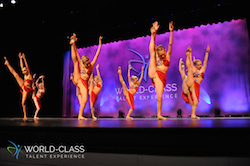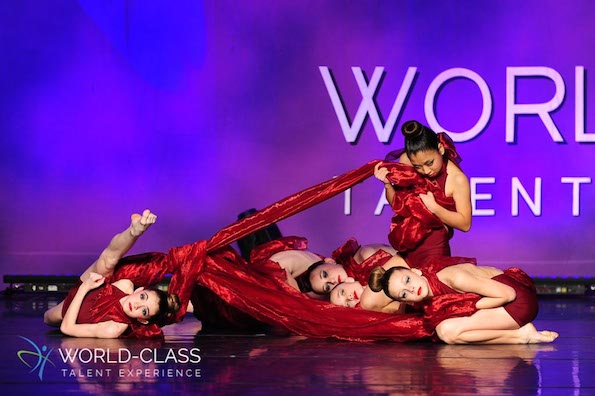By Laura Di Orio by Dance Informa.
This season, World-Class Talent Experience Dance Competition (WCTE) has debuted a new multimedia judging system. In the past, many competition organizations have used a paper score sheet that consists of only a few general areas of the performance, to be judged on a point value. WCTE, which believes in and uses a more in-depth score sheet of 15 specific areas, will now also introduce a video critique from each judge. The motive behind this: to give students something more valuable and helpful to take away from their competition experience.
“Imagine taking a test in school and the teacher merely assigning a grade without marking the wrong answers,” explains Shawna David, co-founder and executive director of WCTE. “The student would not know what he/she did wrong.”
After years on the judging circuit, and when David first wanted to create a new competition organization, she realized that students and teachers wanted to know not only scores but also exactly how they could better their routines. Thus, came David’s unique 15-area score sheet that breaks down more general judging areas, such as “Difficulty” and “Performance Quality” into sub-categories. Judges then would score directly on specific dance elements.
Even further, WCTE has a specifically tailored score sheet for each specific dance genre: a jazz score sheet, a ballet score sheet and so on.
“The score sheet becomes relevant to the dance instead of a meaningless general comment on the routine,” David adds.
This season, WCTE will take their in-depth judging system one step further with a video implementation. This multimedia approach will combine video of the performance with commentary from three judges. Every routine gets a custom score sheet and video critique from each judge. The judge fills in the score sheet while verbalizing his/her reasoning behind each score so that teachers and students can view the video while following along with the score sheet. Students and teachers are given these video critiques to keep directly following the competition.
“Directors were not satisfied with just a number,” David says. “They wanted meaningful feedback to improve their routines. They wanted to know exactly why they received the score they received. Instructors and students now have the tools they need to improve the performances.”

Dancers competing in a World-Class Talent Experience event. Photo by Gary Antle Productions.
Watching the performance video, while listening to the judges’ comments and following along on the score sheets, can be extremely beneficial for both teachers and students in terms of bettering their next competition performance and improving themselves as artists.
“Dancers are able to see exactly where they lost points,” David explains. “They are able to see first-hand areas that need attention. They receive meaningful information from the detailed score sheet and video critique about their routine that assist with increasing their score and overall placement. Our goal at WCTE is for every dancer to leave our competition having learned something to further their dance education.”
For teachers, this multimedia judging system can be used as a teaching tool to correct any problems and improve their students’ routine, to showcase strengths and to validate reasons for scores.
“Our scoring system provides a roadmap to assist in lifting the performance from good to great,” David emphasizes.
Even judges can walk away from any WCTE competition and know that they have helped to make a difference in a dancer’s development.
“Judges provide real, fair and honest critique that targets all aspects of the routine,” David explains. “Judges will score directly in ‘Transitions’, ‘Use of Stage’, ‘Levels’, ‘Creativity’, ‘Interpretation’ and ‘Concept’ for the general category of ‘Choreography’. This system requires a lot more work on the part of the judges. They are forced to analyze more deeply and justify their decisions in a very detailed manner.”
WCTE is the first competition to offer this kind of judging system. While it did debut last competition season as a “test” for studio directors, teachers and dance professionals to offer feedback, it is now ready for the upcoming competition season.
“The feedback has been remarkable,” David says. “Studio directors appreciate the information and use the score sheet as an educational guide during the choreography concept phase, rehearsal and cleaning phase and fine-tune phase. We have had nothing but compliments from studio directors, who tell us that they usually throw away the meaningless score sheets from other competitions. A testament to this is that we enjoy almost 100 percent retention of studios that attend our events. Year after year, they all come back to us.”
For additional information on World-Class Talent Experience, or to register for a dance competition, visit www.wctedance.com or email info@wctedance.com.
Photo (top): Students during a World-Class Talent Experience dance competition, which will now offer video judging. Photo by Gary Antle Productions.















